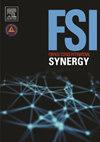人类遗骸检测犬训练辅助工具的类型和储存:综述和处理者调查
Q1 Social Sciences
引用次数: 0
摘要
经过适当的训练,犬类是非常有效的探测器,特别是在人类遗骸探测(HRD)和搜救(SAR)方面。然而,分解气味特征的可变性提出了一个挑战,需要广泛和适应性强的训练。虽然存在一些协议和指导方针,但它们并没有考虑到导致组织之间不一致的所有可能的影响因素。本文结合了对影响遗骸气味特征因素的研究综述和对该领域犬类训练的调查。涉及的关键方面包括使用的训练辅助材料(例如骨骼、血液、身体部位)、样品年龄、密封材料和储存条件。研究结果表明,在一些实践中,处理人员和研究人员达成了共识,例如使用多种培训辅助材料来改变气味概况,并使用玻璃容器来减少背景气味。然而,差异仍然存在,特别是在样品的年龄(新鲜的和非常旧的),更换援助的频率,以及储存条件,如温度和湿度。研究结果强调了犬在不同条件下接触不同遗骸气味的重要性,为进一步改进HRD训练和未来研究方向提供了建议。本文章由计算机程序翻译,如有差异,请以英文原文为准。
Type and storage of human remains detection canine training aids: A review and handler survey
When properly trained, canines are very effective detectors, especially in human remains detection (HRD) and search and rescue (SAR). However, the variability in decomposition odor profiles presents a challenge and requires extensive and adaptable training. Although some protocols and guidelines exist, they do not account for all the possible influential factors leading to inconsistency between organizations. This paper combines a review of research on factors affecting the odor profile of remains with a survey of canine training in the field. Key aspects covered include training aid materials used (e.g. bones, blood, body parts), sample age, containment material, and storage conditions. Findings reveal a consensus amongst handlers and research in some practices, such as use of multiple training aid materials for a variation in odor profiles and use of glass containment to minimize background odor. Discrepancies, however, remain, particularly in the age of sample (fresh vs. very aged), frequency of aid replacement, and storage conditions such as temperature and humidity. The results emphasize the importance of exposing canines to diverse remains odors in differing conditions, providing recommendations for more improved HRD training and directions of future research.
求助全文
通过发布文献求助,成功后即可免费获取论文全文。
去求助
来源期刊

Forensic Science International: Synergy
Social Sciences-Law
CiteScore
4.90
自引率
0.00%
发文量
75
审稿时长
90 days
 求助内容:
求助内容: 应助结果提醒方式:
应助结果提醒方式:


